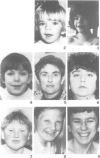Abstract
In this study, the clinical, IQ, and cytogenetic findings in nine Turner's syndrome patients with a ring (X) cell line are compared with those in 16 patients in whom only a 45,X cell line could be found. The ring (X) patients lacked many of the "classic" Turner's syndrome features and the majority were not karyotyped until after the age of 11, usually because of pubertal failure. They also showed a reduction in IQ of 11 points compared with the 45,X group. Some ring (X) patients show characteristic facial features including a broad nose with anteverted nostrils, prominent philtrum, long palpebral fissures, and a wide mouth with a thin upper lip. Neither the physical features nor the IQ are related to the parental origin of the chromosome error. In the majority of cases the ring (X) chromosome was late replicating but XIST activity is being studied further.
Full text
PDF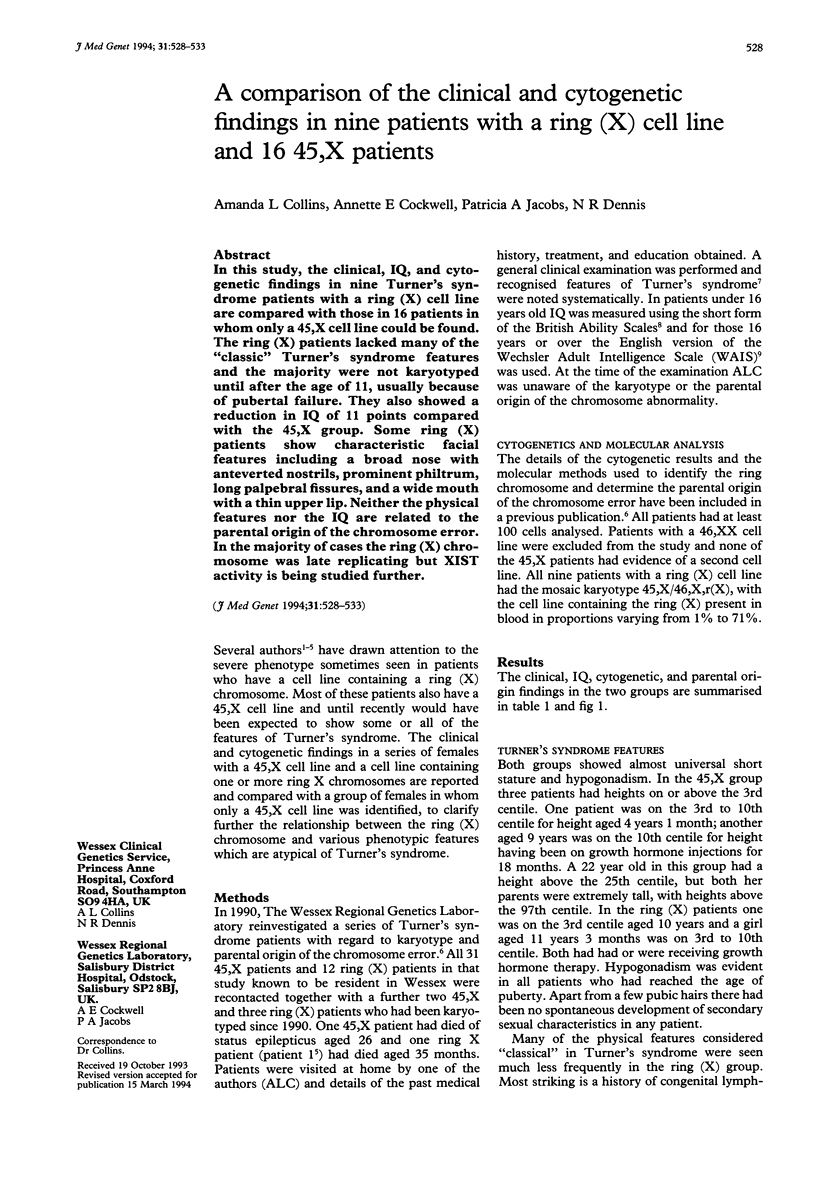
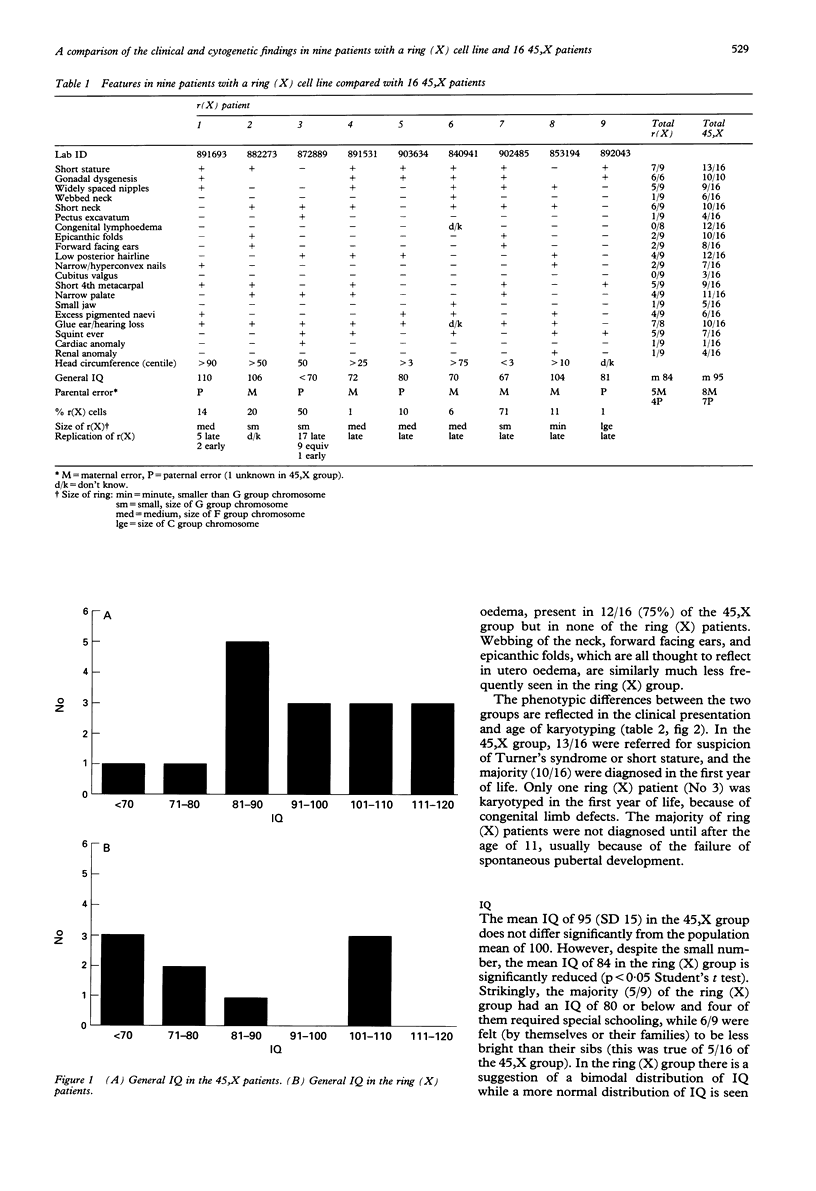
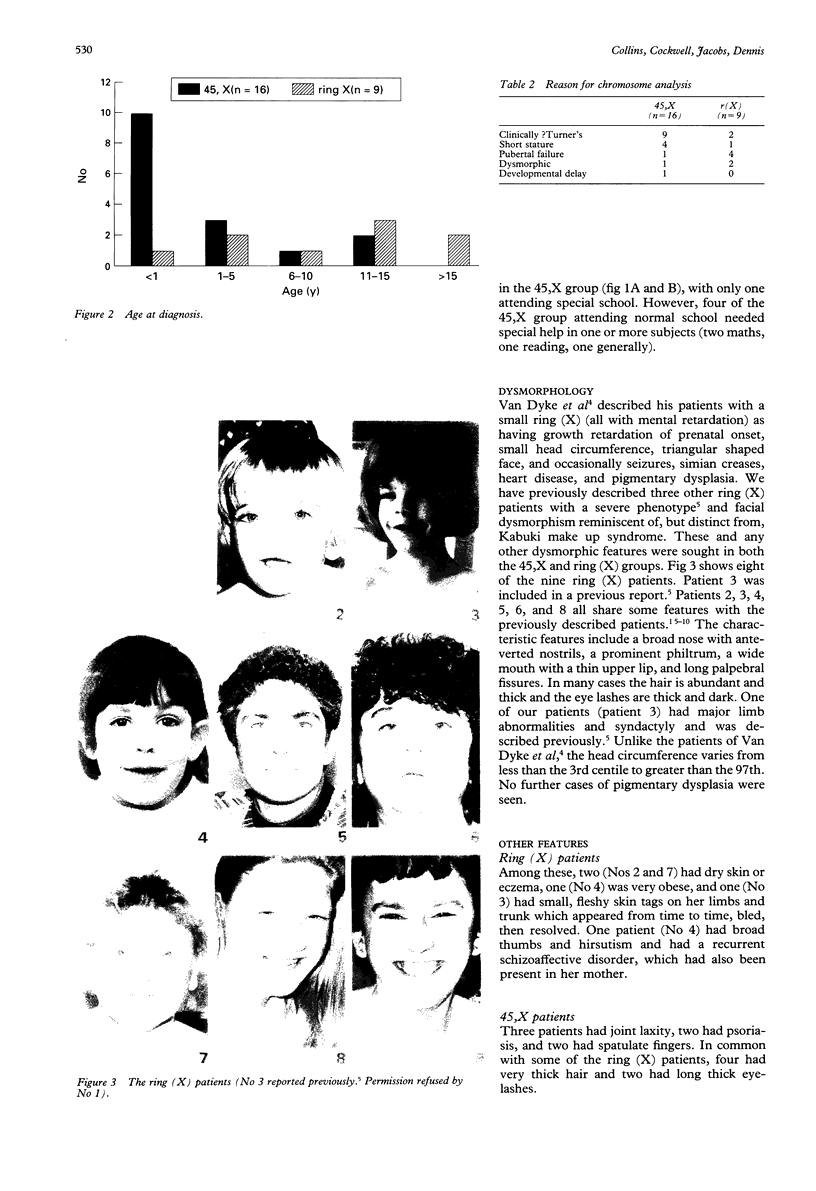


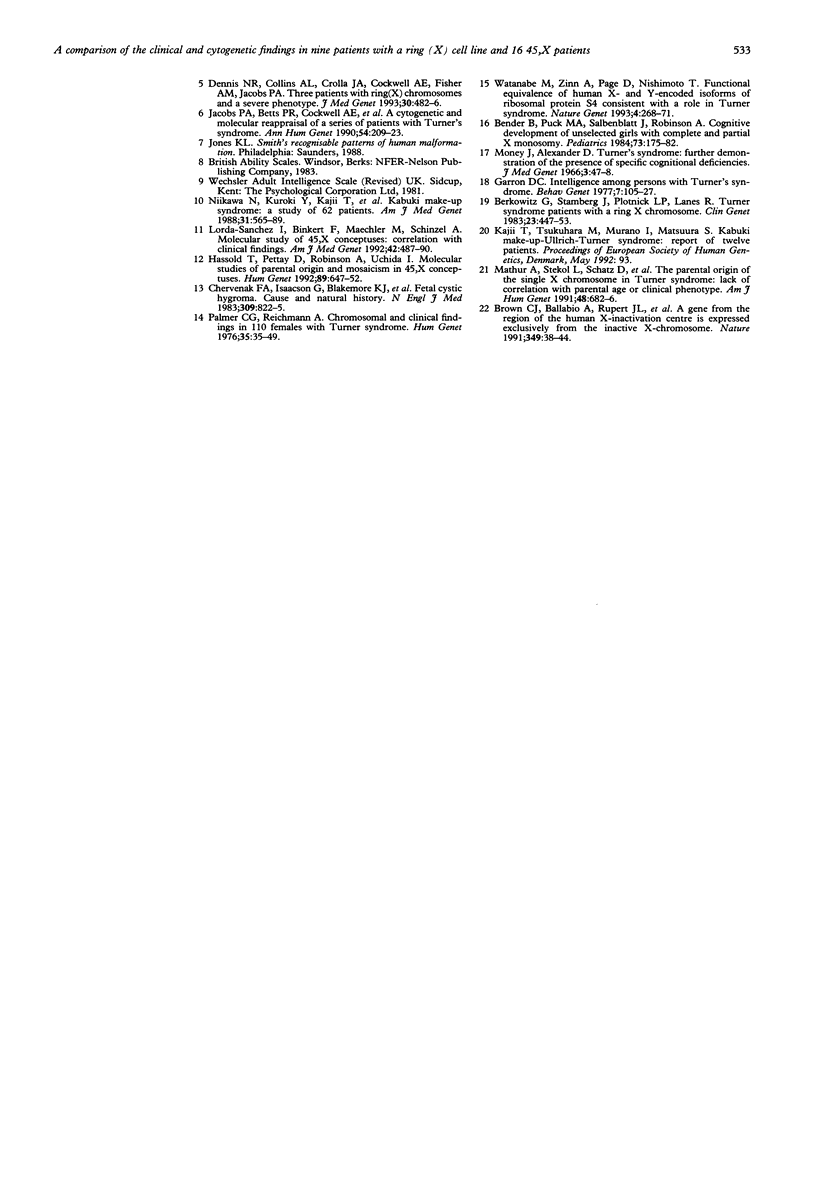
Images in this article
Selected References
These references are in PubMed. This may not be the complete list of references from this article.
- Bender B., Puck M., Salbenblatt J., Robinson A. Cognitive development of unselected girls with complete and partial X monosomy. Pediatrics. 1984 Feb;73(2):175–182. [PubMed] [Google Scholar]
- Berkovitz G., Stamberg J., Plotnick L. P., Lanes R. Turner syndrome patients with a ring X chromosome. Clin Genet. 1983 Jun;23(6):447–453. doi: 10.1111/j.1399-0004.1983.tb01980.x. [DOI] [PubMed] [Google Scholar]
- Brown C. J., Ballabio A., Rupert J. L., Lafreniere R. G., Grompe M., Tonlorenzi R., Willard H. F. A gene from the region of the human X inactivation centre is expressed exclusively from the inactive X chromosome. Nature. 1991 Jan 3;349(6304):38–44. doi: 10.1038/349038a0. [DOI] [PubMed] [Google Scholar]
- Chervenak F. A., Isaacson G., Blakemore K. J., Breg W. R., Hobbins J. C., Berkowitz R. L., Tortora M., Mayden K., Mahoney M. J. Fetal cystic hygroma. Cause and natural history. N Engl J Med. 1983 Oct 6;309(14):822–825. doi: 10.1056/NEJM198310063091403. [DOI] [PubMed] [Google Scholar]
- Dennis N. R., Collins A. L., Crolla J. A., Cockwell A. E., Fisher A. M., Jacobs P. A. Three patients with ring (X) chromosomes and a severe phenotype. J Med Genet. 1993 Jun;30(6):482–486. doi: 10.1136/jmg.30.6.482. [DOI] [PMC free article] [PubMed] [Google Scholar]
- Fryns J. P., Kleczkowska A., Van Den Berghe H. High incidence of mental retardation in Turner syndrome patients with ring chromosome X formation. Genet Couns. 1990;1(2):161–165. [PubMed] [Google Scholar]
- Garron D. C. Intellegence among persons with Turner's syndrome. Behav Genet. 1977 Mar;7(2):105–127. doi: 10.1007/BF01066000. [DOI] [PubMed] [Google Scholar]
- Grompe M., Rao N., Elder F. F., Caskey C. T., Greenberg F. 45,X/46,X,+r(X) can have a distinct phenotype different from Ullrich-Turner syndrome. Am J Med Genet. 1992 Jan 1;42(1):39–43. doi: 10.1002/ajmg.1320420110. [DOI] [PubMed] [Google Scholar]
- Hassold T., Pettay D., Robinson A., Uchida I. Molecular studies of parental origin and mosaicism in 45,X conceptuses. Hum Genet. 1992 Aug;89(6):647–652. doi: 10.1007/BF00221956. [DOI] [PubMed] [Google Scholar]
- Jacobs P. A., Betts P. R., Cockwell A. E., Crolla J. A., Mackenzie M. J., Robinson D. O., Youings S. A. A cytogenetic and molecular reappraisal of a series of patients with Turner's syndrome. Ann Hum Genet. 1990 Jul;54(Pt 3):209–223. doi: 10.1111/j.1469-1809.1990.tb00379.x. [DOI] [PubMed] [Google Scholar]
- Kushnick T., Irons T. G., Wiley J. E., Gettig E. A., Rao K. W., Bowyer S. 45X/46X,r(X) with syndactyly and severe mental retardation. Am J Med Genet. 1987 Nov;28(3):567–574. doi: 10.1002/ajmg.1320280304. [DOI] [PubMed] [Google Scholar]
- Lorda-Sanchez I., Binkert F., Maechler M., Schinzel A. Molecular study of 45,X conceptuses: correlation with clinical findings. Am J Med Genet. 1992 Feb 15;42(4):487–490. doi: 10.1002/ajmg.1320420414. [DOI] [PubMed] [Google Scholar]
- Mathur A., Stekol L., Schatz D., MacLaren N. K., Scott M. L., Lippe B. The parental origin of the single X chromosome in Turner syndrome: lack of correlation with parental age or clinical phenotype. Am J Hum Genet. 1991 Apr;48(4):682–686. [PMC free article] [PubMed] [Google Scholar]
- Money J., Alexander D. Turner's syndrome: further demonstration of the presence of specific cognitional deficiencies. J Med Genet. 1966 Mar;3(1):47–48. doi: 10.1136/jmg.3.1.47. [DOI] [PMC free article] [PubMed] [Google Scholar]
- Niikawa N., Kuroki Y., Kajii T., Matsuura N., Ishikiriyama S., Tonoki H., Ishikawa N., Yamada Y., Fujita M., Umemoto H. Kabuki make-up (Niikawa-Kuroki) syndrome: a study of 62 patients. Am J Med Genet. 1988 Nov;31(3):565–589. doi: 10.1002/ajmg.1320310312. [DOI] [PubMed] [Google Scholar]
- Palmer C. G., Reichmann A. Chromosomal and clinical findings in 110 females with Turner syndrome. Hum Genet. 1976 Dec 29;35(1):35–49. doi: 10.1007/BF00295617. [DOI] [PubMed] [Google Scholar]
- Van Dyke D. L., Wiktor A., Palmer C. G., Miller D. A., Witt M., Babu V. R., Worsham M. J., Roberson J. R., Weiss L. Ullrich-Turner syndrome with a small ring X chromosome and presence of mental retardation. Am J Med Genet. 1992 Aug 1;43(6):996–1005. doi: 10.1002/ajmg.1320430617. [DOI] [PubMed] [Google Scholar]
- Watanabe M., Zinn A. R., Page D. C., Nishimoto T. Functional equivalence of human X- and Y-encoded isoforms of ribosomal protein S4 consistent with a role in Turner syndrome. Nat Genet. 1993 Jul;4(3):268–271. doi: 10.1038/ng0793-268. [DOI] [PubMed] [Google Scholar]



